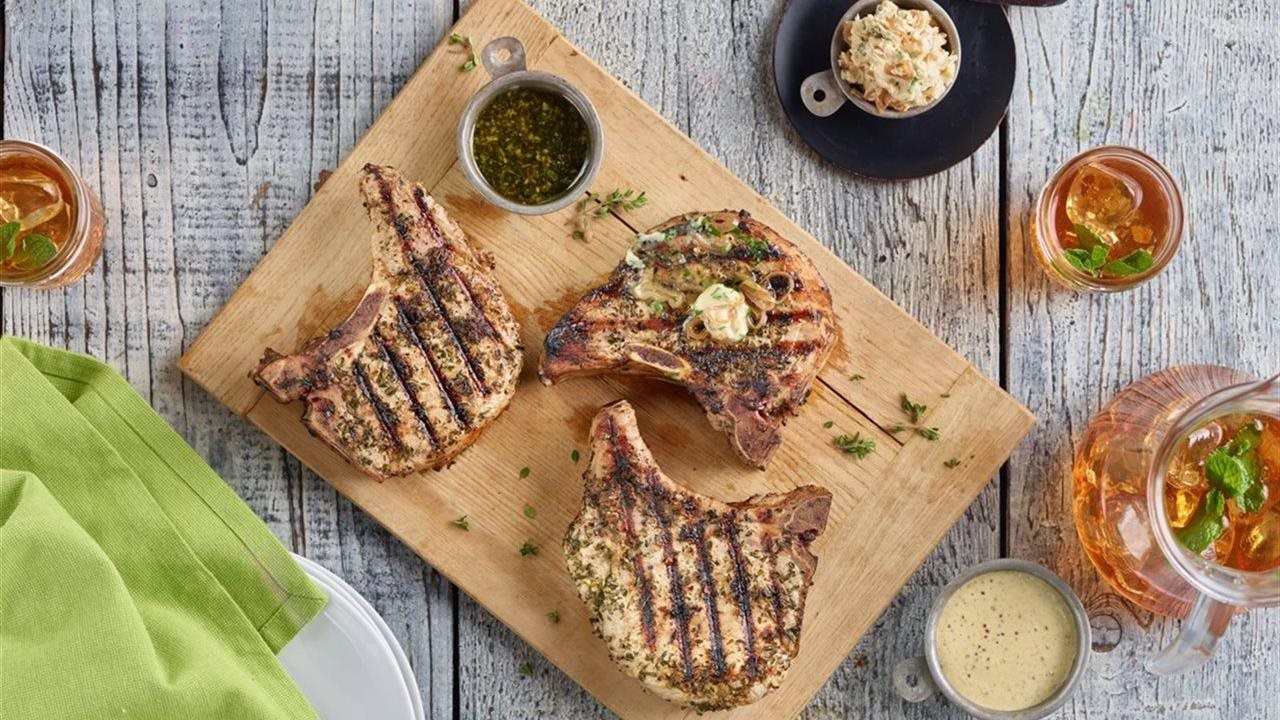2018-02-23T08:25:00
(BPT) – There are few foods that span a variety of diverse culinary styles more than fresh pork. Fresh pork is known by both leading chefs and home cooks as a flavorful, versatile solution for any night of the week.
Smithfield Fresh Pork is proud to partner with the National Pork Board and 20 award-winning chefs at this year’s South Beach Wine and Food Festival (SOBEWFF). These chefs will create high-quality pork dishes for attendees featuring Smithfield Prime Fresh Pork, an all-natural premium line of fresh pork. Each recipe will showcase the superior quality and versatility of the Smithfield Prime collection and inspire consumers to cook with only the best ingredients at home. Event-goers will have the opportunity to experience these recipes at the following NPB-sponsored events: Tacos After Dark on Thursday, February 22; Burger Bash on Friday, February 23; Spanish Dinner on Saturday, February 23; Swine, Wine & Spirits and Coca-Cola Beachside BBQ, both on Sunday, February 25.
Chef Jose Garces, one of Smithfield’s Chef Partners, will host two pork-centric events at SOBEWFF. Garces, a James Beard award winner and Iron Chef, prefers to cook with Smithfield Prime Fresh Pork due its high quality and flavor.
“As a chef, there is nothing more important to me than the quality of the ingredients I choose for my dishes,” said Garces. “That is why I love to work with Smithfield Prime Fresh Pork. They understand that quality leads to flavor and flavorful dishes create the best experiences and memories.”
The most discerning chefs, championship pitmasters and home cooks alike seek quality, flavorful fresh pork, and that is why they trust Smithfield Prime Fresh Pork. Smithfield Prime Fresh Pork is a line of premium, all-natural fresh pork that is certifiably 20 percent more tender than other leading brands of all-natural pork. The Smithfield Prime collection is hand-trimmed and sourced from America’s most trusted farms, using a specialty breed of Duroc hogs and some of the most stringent quality standards in the industry. Thus, Smithfield Prime Fresh Pork products naturally have exceptional color, increased marbling and enhanced flavor, creating an elevated eating experience.
You can catch Chef Garces in action at the Spanish Dinner event taking place Saturday, February 24; and at the Coca-Cola Beachside BBQ on Sunday, February 25. For those who want to take a page out of Chef Garces’ book and try their hand at cooking up one of his signature dishes, below is a recipe he crafted specially for Smithfield.
Grilled pork chops with cognac butter, mustard aioli and mushrooms
For the pork chops:
4 Smithfield(R) Prime Bone-In Pork Chops (1-inch thick)
1 cup extra virgin olive oil
1/4 cup finely chopped fresh thyme
1/4 cup finely chopped fresh rosemary
1/4 cup finely chopped garlic
Directions:
Mix oil, thyme, rosemary and garlic in large mixing bowl. Add pork chops and coat thoroughly. Cover and refrigerate at least 2 hours and up to 24 hours. Heat grill to medium using hickory wood charcoal. Remove chops from marinade and grill 7 to 9 minutes per side until internal temperature reaches 145 F to 160 F. Remove from heat and immediately brush with cognac butter. Let stand 3 minutes before serving.
For the cognac butter:
1 cup good-quality cognac
1/2 cup thinly sliced shallots
1 cup butter, room temperature
1/4 cup chopped fresh parsley
Directions:
Combine cognac and shallots in a small saucepan. Simmer until cognac is reduced by two-thirds. Strain and let cool. Mix together with butter and parsley; let stand at room temperature until ready to use.
For the mustard aioli:
3 eggs
1 cup Dijon mustard
1/4 cup lemon juice
1/2 cup whole grain mustard
3 cups vegetable oil
Directions:
Combine eggs, Dijon mustard and lemon juice in food processor or blender. Blend until smooth. Slowly drizzle in vegetable oil, while food processor is running, until emulsified. Remove from processor and fold in whole grain mustard. Season to taste.
For the mushrooms:
2 lbs. mixed fresh wild mushrooms (such as chanterelle, hen of the woods, porcini and morel)
1/4 cup extra virgin olive oil
1/4 cup finely chopped fresh thyme
1/4 cup finely chopped fresh rosemary
1 tablespoon lemon juice
Directions:
Toss together mushrooms and olive oil. Place in grill basket and grill until tender and cooked through, turning occasionally. Remove from heat and toss with remaining ingredients. Serve immediately.
This recipe yields four servings; total prep time is 25 minutes (plus two hours marinade time), and total cook time is expected at 35 minutes.
Visit SaborSmithfield.com for more of Chef Garces’ recipes and inspiration for your next meal and to learn more about Smithfield’s quality and freshness. And visit sobewff.org for more details on the South Beach Wine and Food Festival. For more information about National Pork Board, visit porkteinspira.com.










